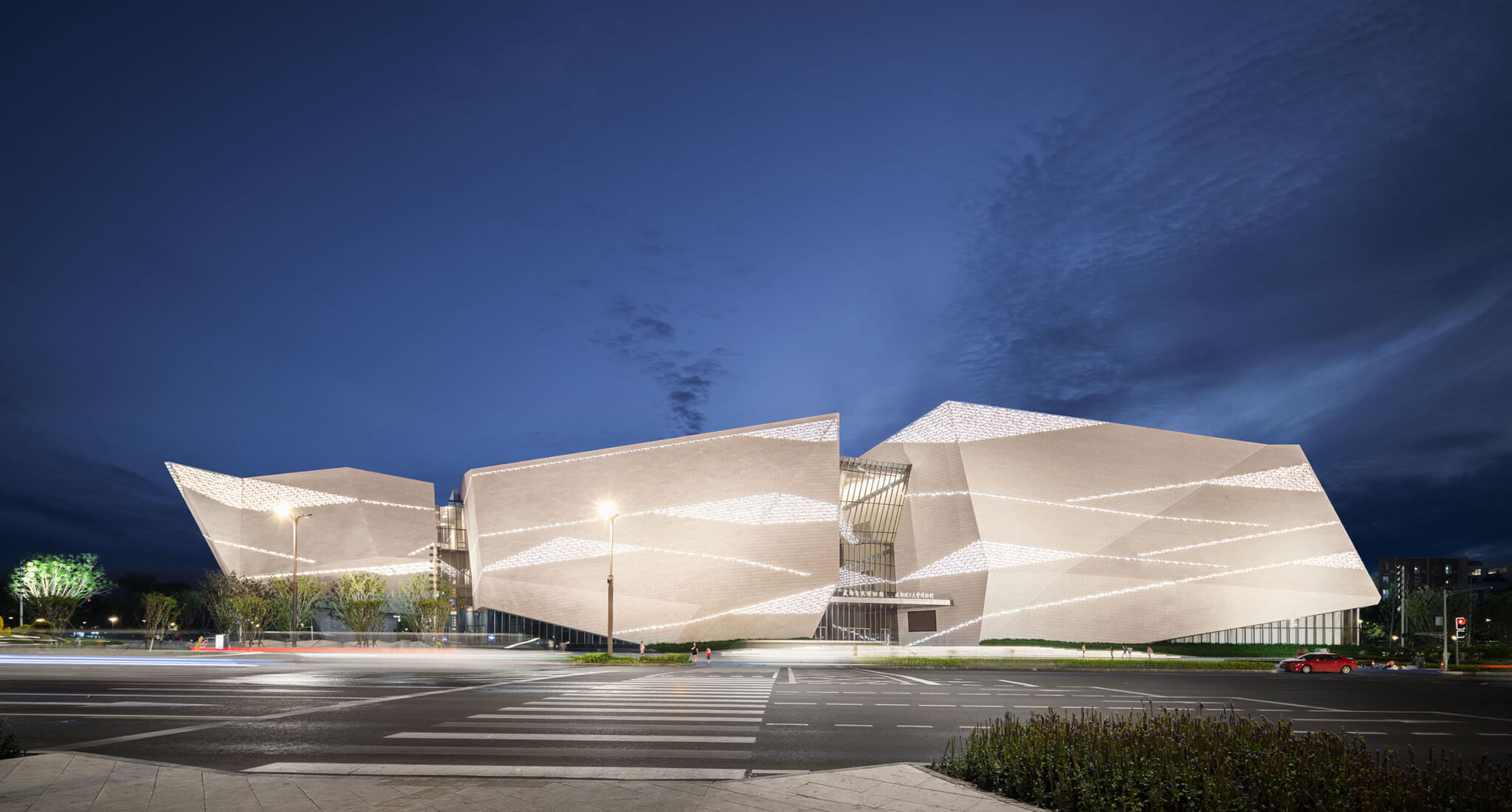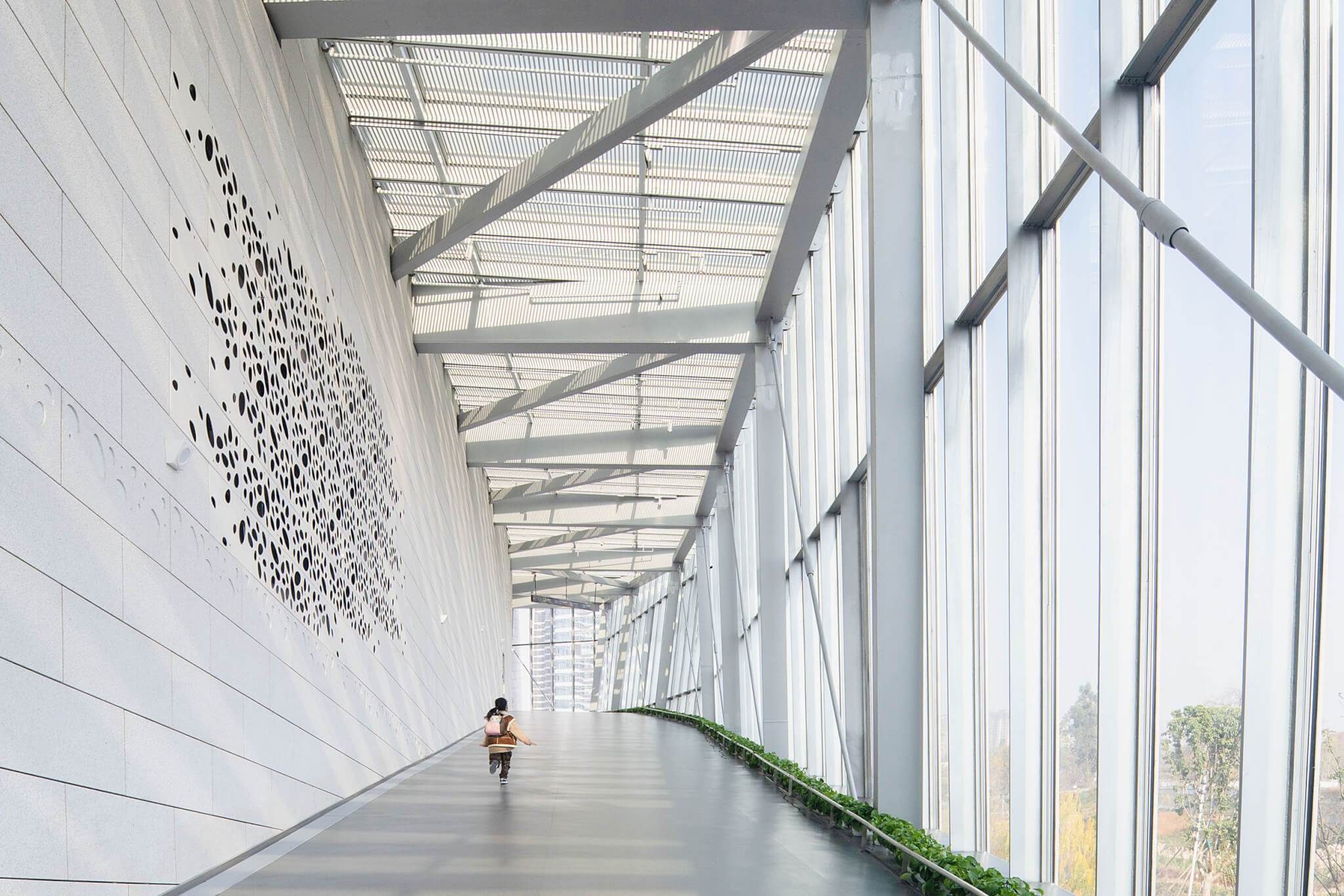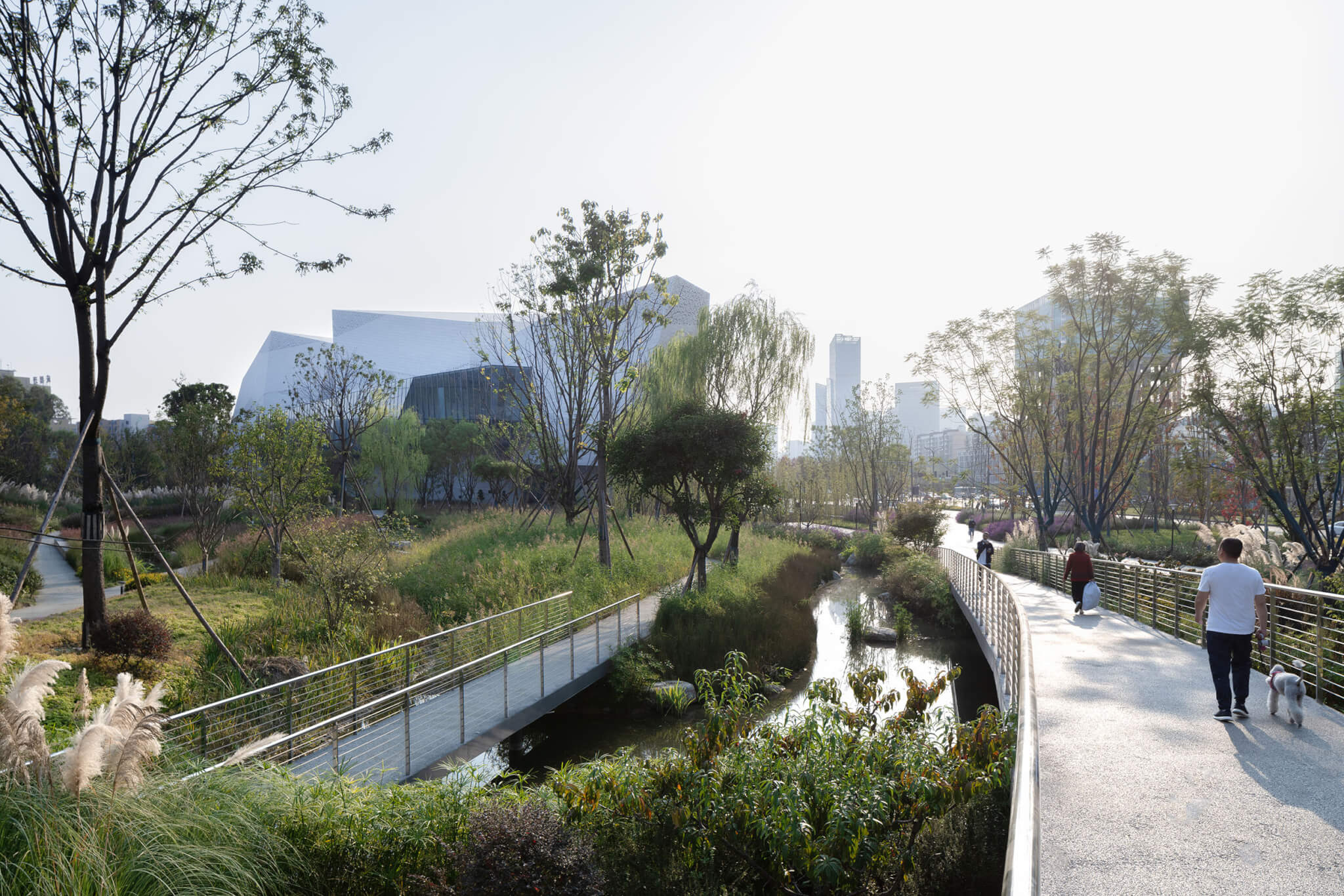Architect: Pelli Clarke & Partners
Location: Chengdu, China
Completion Date: 2022
Pelli Clarke & Partners (PCP) recently completed work on the Chengdu Natural History Museum, a new institution for science and culture in China’s fourth-most populous city. The building’s complex, multifaceted form evokes the rugged topography of the Sichuan region’s mountain ranges and is composed of locally sourced granite. The 540,000-square-foot project features large exhibition spaces, shops, a cafe, cinema, and expansive public green space.
To emulate a starry night sky or snow-covered mountains (depending on the time of day), an LED backlight system was installed within perforations applied along the granite facade. The perforations range in size from one to ten inches. Larger perforations were cut using a water jet while the finer details were carried out through precision drilling. The various rotations and orientations of three original panel designs informed the pattern. To reinforce the perforated granite aluminum plates were placed behind it.

The facade consists of a double layer rainscreen. An approximately 26-inch void between the two layers contains the building’s LED lighting system and allows space for maintenance. Behind the LED fixtures a roughly 14-inch thick inner wall contains structural steel tubes and has been double insulated, sealed, and waterproofed. The rainscreen wall, mimicking the geological formations created by shifting tectonic plates, contains over 70 folded surfaces and more than 6,000 outer curtain wall supports. High tech machinery was utilized to install the complex steel structure undergirding the mountain forms. Steel was selected over concrete for the structure to reduce embodied carbon.

The structure strives to be accessible as possible, entrance ramps, glass elevators connecting the public atrium space to the exhibitions, and accommodation for public transit and pedestrians, help it to achieve this. Similarly, within the expansive public atrium wide pedestrian walkways connect floors.

Likewise, a number of strategies were taken to reduce the energy consumption and environmental impact of the project. High performance, low-E glazing was specified for the glass walls and roofs. Inside, aluminum screens beneath the glass roof surfaces reduce glare.
Kristen Hawkins, PCP’s design team lead for the project, told AN, “We had several goals for the fenestration of the solid forms of the building: To maintain the architectural contrast between the very glassy walls and roofs of open spaces between the exhibit volumes and the solid volumes themselves; to bring light into the exhibition spaces that would be compatible with exhibits.”

PCP furthers the mountain metaphor when designing the museum’s circulation. Spanning the eastern facade of the museum, a suspended glass-enclosed corridor connects the second and third floors of the museum, emulating the wood plank paths erected alongside Sichuan’s mountain bluffs.
In surrounding the museum with reflecting pools, tributaries, and water features, the project’s landscape architect, Land Artitude Corporation, pulled from from the traditions of local irrigation practices. The Dongfeng Canal runs alongside the eastern portion of the museum campus. The site contains several themed gardens including the Wetland Garden, Bamboo Garden, Water Lily Garden, and Seasonal Plant Garden.
A rainwater harvesting system sequesters water from the roof and other parts of the site. The collected rainwater is treated and reused to water the landscaping and refill the tributaries and a reflecting pool at the north end of the campus.

The project’s original construction schedule targeted the 2021 Summer World University Games as the deadline for completion, however, postponement of the games due to the pandemic deferred the construction timeline. According to Hawkins, “Unusually hot weather also impacted the schedule. Construction was halted and restarted multiple times, causing major complications in staffing and remobilization.” Despite these disruptions the project and design and construction team pulled through and opened the Chengdu Natural History Museum to the public, albeit 18 months late.
Project Specifications
- Architect: Pelli Clarke & Partners
- Location: Chengdu, China
- Completion Date: 2022
- Architect of Record: China Southwest Architectural Design and Research (CSWADI)
- Structural Engineer: China Southwest Architectural Design and Research (CSWADI)
- Brick and Ceramic: China Southwest Architectural Design and Research (CSWADI)
- MEP: China Southwest Architectural Design and Research (CSWADI)
- Landscape architect: Land Artitude Corporation











